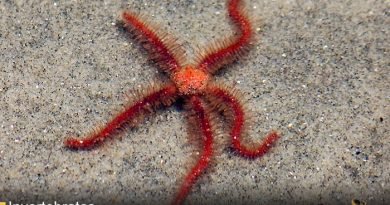Starfish
Starfish are a group of echinoderms that are part of the class Asteroidea. Their bodies resemble stars, from which they have taken their name from. There are over 1,500 species of sea stars, and they inhabit oceans from the tropics to waters near the poles.
Because of their fragile electrolyte balance, sea stars need sea water to survive, and this means that they can only be found in seas and oceans, as they could not survive in any body of fresh water. The numerous species of sea stars inhabit most of the world’s oceans. Sea stars can be found in many types of habitats, ranging from rocky shores to tidal pools and coral reeds. While the species are abundant in tropical waters, the greatest diversity can usually be found near coastal waters. Starfish may live in the intertidal zone while some species could be found even 6,000 deep into the ocean.
The characteristic shape of sea stars is that of a central disc surrounded by five tubular arms. They have a radial symmetry, with the upper surface having various textures ranging from spines to granules or being smooth. The tube feet are operated via a hydraulic system, with which they move, usually on the bottom of the seafloor. The mouth of these animals is situated on the ventral part, right in the center. Many starfish can regenerated limbs, and most often they will shed an arm in order to escape predators.
Sea stars are opportunistic feeders, which means that they get their food from a variety of sources and through various means. Their flexibility allows them to thrive in many habitats, and that is one of the main reasons why some sea star species are invasive and replace native inhabitants. Most sea stars feed on small invertebrates such as snails, bivalves and sponges, while others are detritivore, meaning they scoop the sea floor and get their food by filtering through the sediment filled with decomposing animal and plant parts. Other sea stars feed on the polyps of corals.
Some species of sea stars have an interesting feeding method, as they search through the bottom floor for clams with a specialized tube, grasp them with an adductor muscle, pry open the shell and then insert their everted stomach through the crack and start the digestive process.
Because of their size, adaptability and diverse diets, starfish are keystone species, having a great ecological impact in their marine community.



